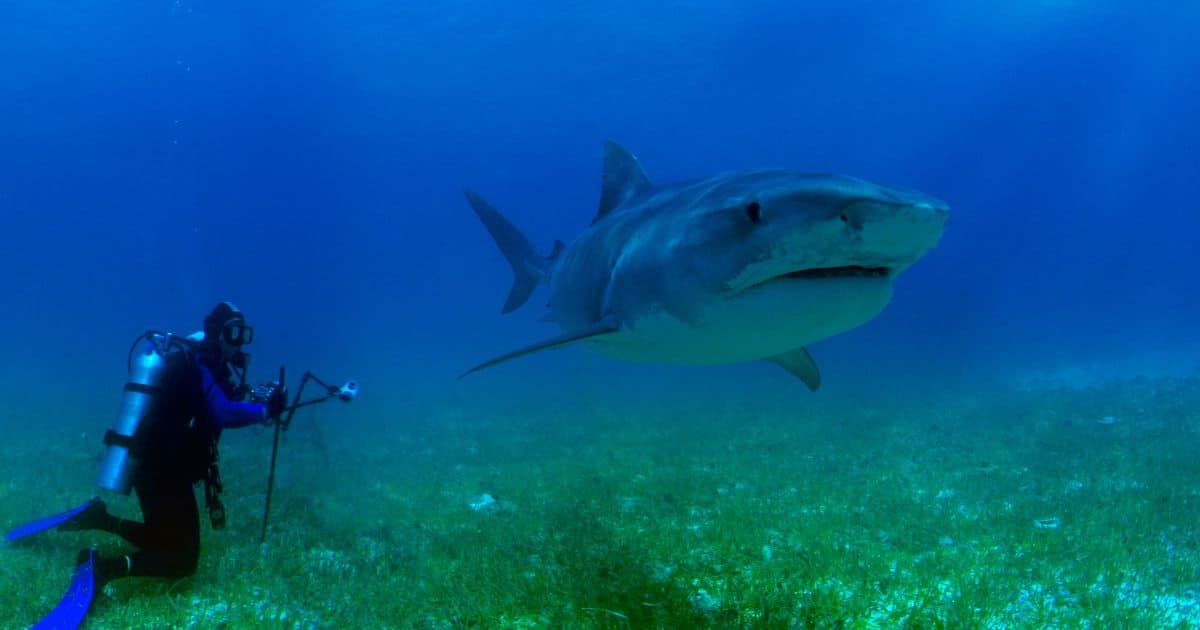For thrill-seekers, a holiday isn’t complete without a rush of adrenaline. Swimming with sharks through North Shore Shark Adventures has become one of the ultimate adventures, combining the thrill of facing an apex predator with the unique experience of witnessing their beauty up close. As this daring activity grows in popularity, travelers are discovering new destinations and ways to engage in shark encounters that are both exhilarating and safe.
Here, we explore the main aspects of shark diving, from what to expect to the risks and rewards of this adventure.

The Allure of Shark Diving: Facing Fear with Fascination
Shark diving holds a unique appeal, often drawing in individuals who want to face their fears while connecting with marine life. These encounters are designed to be safe, organized by professionals with a deep understanding of sharks and their behavior. For many, the attraction of shark diving is rooted in a fascination with these mysterious creatures, seeing them not as threats but as vital parts of the marine ecosystem.
This experience takes travelers far from the usual vacation activities and offers a powerful way to engage with nature. Swimming with sharks transforms the ocean into an unforgettable landscape, full of awe and adrenaline. Many dive sites around the world offer this opportunity, from the crystal-clear waters of the Bahamas to the vibrant reefs of South Africa, each providing a unique setting to encounter these majestic animals.
Types of Shark Encounters: Caged and Cage-Free
When it comes to swimming with sharks, there are two main types of encounters: caged and cage-free dives. Caged diving, popular in destinations like South Africa and California, allows participants to enter a metal cage lowered into the water. This setup offers close proximity to large sharks, such as great whites, while providing an added level of safety. The cage serves as a barrier between divers and sharks, ensuring safety while allowing for thrilling, up-close views of these predators.
Cage-free diving, on the other hand, offers a more immersive experience, but is typically limited to smaller, less aggressive shark species like reef and nurse sharks. Locations like the Bahamas, the Maldives, and Hawaii are known for cage-free dives, where trained guides lead small groups to observe these sharks in their natural habitats. In both cases, divers receive instructions on safety and shark behavior, helping to minimize risks and create a respectful, mindful encounter with marine wildlife.
Popular Shark Diving Destinations Around the World
Shark diving destinations are as diverse as the species themselves, offering adventure in various parts of the globe. South Africa’s Gansbaai is a premier destination for great white shark cage diving, attracting adventurers from around the world. This area is known for its dense shark population and clear, cold waters, perfect for observing great whites in action. With knowledgeable guides and high safety standards, Gansbaai is an ideal spot for anyone looking to see these predators up close.
In the Bahamas, divers can experience cage-free encounters with tiger sharks, hammerheads, and reef sharks. The Caribbean’s warm, clear waters provide excellent visibility, enhancing the overall experience. Meanwhile, Hawaii offers a range of shark encounters, from cage-free diving with Galapagos and reef sharks to educational tours that emphasize shark conservation. Other destinations like Australia’s Neptune Islands and Mexico’s Isla Guadalupe also feature unforgettable shark encounters for divers of various experience levels.
What to Expect During a Shark Dive
While each shark diving experience is unique, there are common elements to expect on a guided dive. The adventure typically begins with an orientation and safety briefing led by experienced guides who explain shark behavior and how to interact safely. Divers are advised on how to move slowly and avoid sudden motions, as well as how to use their breathing to remain calm and steady underwater. Guides often provide additional insights on the importance of sharks in the ecosystem, fostering respect and awareness.
Dives are usually timed to maximize shark sightings, with groups entering the water when activity levels are highest. In cage dives, participants enter a metal cage and stay at or near the water’s surface, allowing them to view the sharks while remaining protected. Cage-free divers swim alongside guides, keeping a respectful distance while observing the sharks’ natural behavior. After the dive, groups often debrief and share their experiences, reflecting on the thrill of encountering sharks in their environment.
The Risks and Safety Measures of Shark Diving
Swimming with sharks, while thrilling, involves some level of risk. However, professional dive companies follow strict protocols to minimize danger. Shark behavior is largely predictable, and guides use techniques to ensure divers’ safety, including maintaining group control, monitoring sharks’ behavior, and choosing the appropriate species and conditions for each encounter. Divers are encouraged to remain calm, as erratic movements can attract unwanted attention from sharks.
Many guides also discourage feeding sharks, as this can alter their natural behavior and lead to misconceptions about humans as a food source. By adhering to these safety measures, shark diving can be an exhilarating yet safe experience, allowing participants to witness these powerful creatures without harm.
Rewards Beyond the Adrenaline: Conservation and Connection
Shark diving is about more than just the thrill; it’s an opportunity to foster understanding and conservation. Misconceptions about sharks have led to fear and, in some cases, widespread hunting. However, swimming with sharks allows people to see these animals as vital, intelligent creatures rather than mindless predators. Many dive companies support shark conservation efforts, using part of their proceeds to fund research, habitat protection, and education initiatives.
